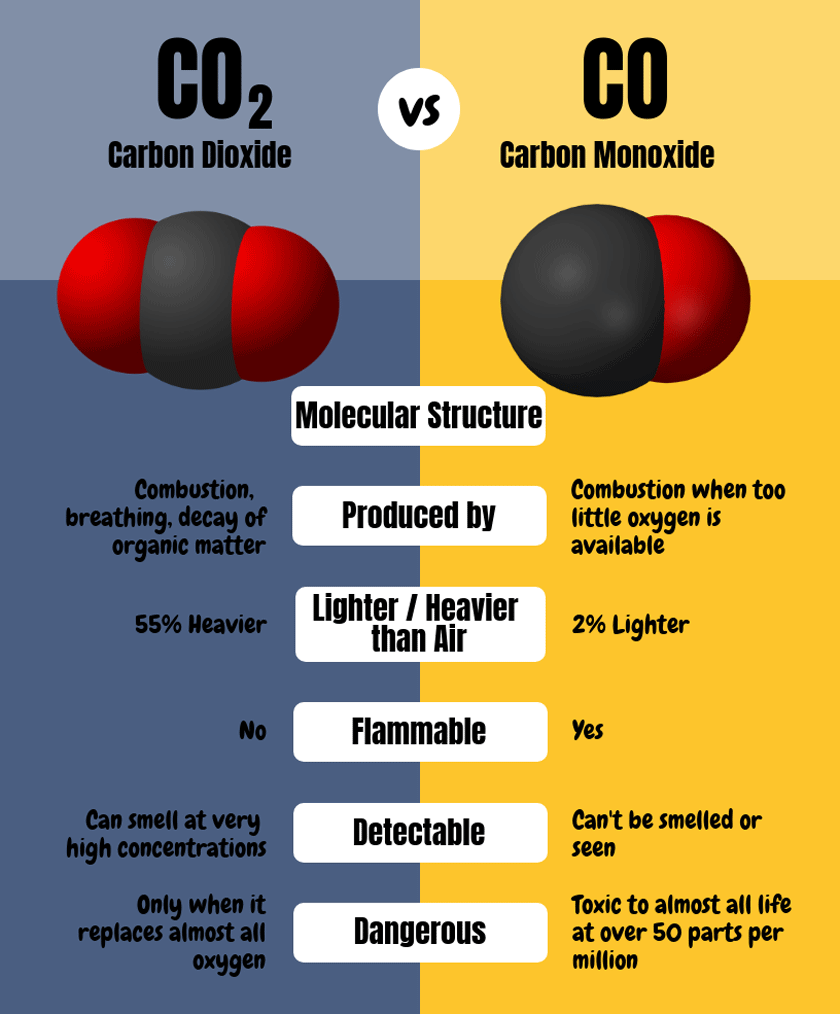Carbon monoxide victims. Carbon Monoxide Poisoning: Symptoms, Causes, and Prevention Guide
What are the symptoms of carbon monoxide poisoning. How can you prevent carbon monoxide exposure in your home. What should you do if you suspect carbon monoxide poisoning. Learn about the dangers of this invisible killer and how to protect yourself and your family.
Understanding Carbon Monoxide: The Silent Killer
Carbon monoxide (CO) is an odorless, colorless gas produced by burning fuel. Its invisibility and lack of smell make it a particularly dangerous threat. CO can build up rapidly in enclosed spaces, overwhelming victims before they realize what’s happening.
Why is carbon monoxide so hazardous? When inhaled, CO molecules bind to hemoglobin in the blood much more readily than oxygen does. This prevents oxygen from being properly transported throughout the body, leading to tissue damage and potentially death.
Sources of Carbon Monoxide in the Home
Common sources of CO in residential settings include:
- Fuel-burning appliances (furnaces, water heaters, stoves)
- Fireplaces and wood stoves
- Generators
- Vehicles left running in attached garages
- Charcoal grills used indoors
Any device that burns fuel can potentially produce carbon monoxide if not properly maintained or used in a well-ventilated area.

Recognizing the Symptoms of Carbon Monoxide Poisoning
The initial symptoms of CO poisoning can be subtle and easily mistaken for other illnesses. Recognizing these signs early could save lives.
Common Symptoms of CO Exposure
- Headache
- Dizziness
- Weakness
- Nausea
- Vomiting
- Chest pain
- Confusion
At higher levels of exposure or over prolonged periods, symptoms may progress to:
- Loss of consciousness
- Seizures
- Cardiac arrest
- Death
Is carbon monoxide poisoning more dangerous for certain groups? Yes, some individuals are at higher risk for severe effects from CO exposure. These include:
- Infants and young children
- Elderly adults
- People with chronic heart disease
- Individuals with anemia
- Those with respiratory problems
Preventing Carbon Monoxide Exposure in Your Home
Taking proactive steps to prevent CO buildup is crucial for protecting your household. Here are key prevention strategies:
Proper Installation and Maintenance of Fuel-Burning Appliances
Have a qualified technician inspect your fuel-burning appliances annually. This includes:
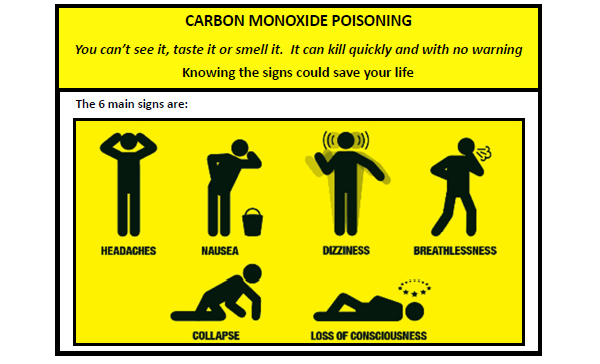
- Furnaces
- Water heaters
- Gas stoves and ovens
- Fireplaces and chimneys
Ensure proper ventilation for all fuel-burning devices. Never use portable generators, camp stoves, or other gasoline-powered equipment inside your home or garage.
Install and Maintain Carbon Monoxide Detectors
CO detectors are a critical line of defense. Install them:
- On every level of your home
- Outside sleeping areas
- Near attached garages
Test detectors monthly and replace batteries at least once a year. Replace the entire unit according to manufacturer recommendations, typically every 5-7 years.
Safe Use of Vehicles and Other Fuel-Burning Equipment
Never run vehicles or other fuel-burning engines in enclosed spaces, even with the garage door open. When using outdoor equipment like grills or generators, keep them at least 20 feet away from windows, doors, and vents.
What to Do If You Suspect Carbon Monoxide Poisoning
If you suspect CO exposure, quick action is essential. Follow these steps:
- Get everyone out of the house immediately and into fresh air.
- Call emergency services (911 in the US) from outside the affected area.
- Do not re-enter the premises until emergency responders have given the all-clear.
- Seek medical attention, even if symptoms seem mild. CO poisoning can have delayed effects.
Why is it crucial to leave the premises immediately? CO levels can rise rapidly, and even a few extra minutes of exposure can be dangerous. Always prioritize safety over investigating the source of the problem.

Treatment for Carbon Monoxide Poisoning
Treatment for CO poisoning focuses on removing the gas from the body and supporting vital functions. The primary treatments include:
Oxygen Therapy
Breathing pure oxygen helps displace CO from the hemoglobin in your blood. This may be done through a mask or, in severe cases, a hyperbaric oxygen chamber.
Supportive Care
Medical staff will monitor vital signs and provide supportive treatments as needed. This may include intravenous fluids, medications to reduce brain swelling, or cardiac support.
Can carbon monoxide poisoning have long-term effects? Yes, severe or prolonged exposure can lead to lasting neurological damage. This may manifest as memory problems, mood changes, or difficulty with coordination and balance. Follow-up care with a neurologist may be recommended for some patients.
Legal and Regulatory Aspects of Carbon Monoxide Safety
Many jurisdictions have laws and regulations aimed at reducing CO-related incidents. These may include:
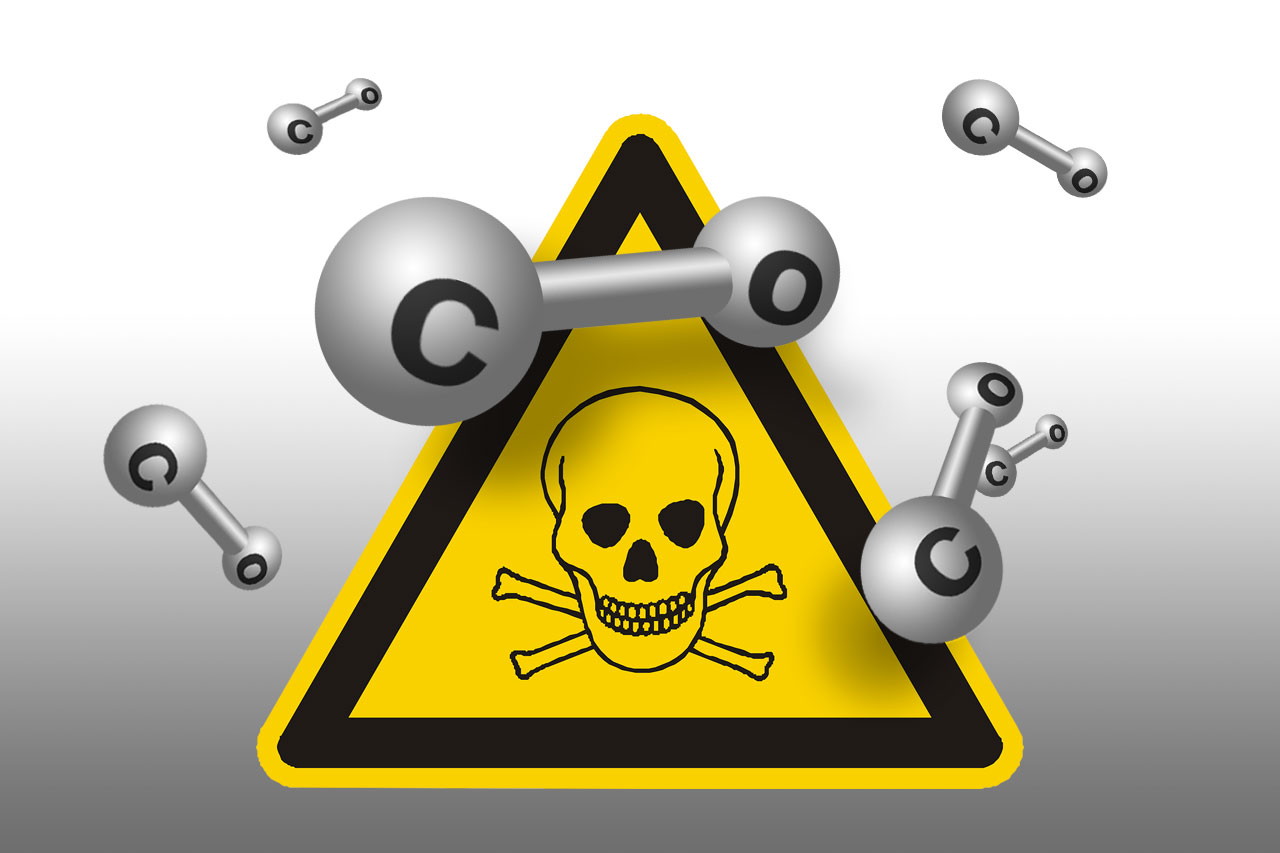
- Mandatory CO detectors in residential buildings
- Regular inspections of fuel-burning appliances in rental properties
- Warning labels on certain fuel-burning equipment
- Building codes specifying proper ventilation for fuel-burning appliances
Are there specific regulations for landlords regarding CO safety? In many areas, landlords are required to install and maintain CO detectors in rental properties. They may also be responsible for regular inspection and maintenance of fuel-burning appliances. Check your local laws for specific requirements.
Carbon Monoxide Risks in Non-Residential Settings
While home safety is crucial, CO poisoning can occur in various settings. Be aware of potential risks in:
Workplace Environments
Industries using fuel-powered equipment or working in enclosed spaces may have elevated CO risks. Examples include:
- Warehouses using forklifts
- Construction sites with portable generators
- Auto repair shops
Employers should implement proper ventilation, regular equipment maintenance, and CO monitoring protocols.
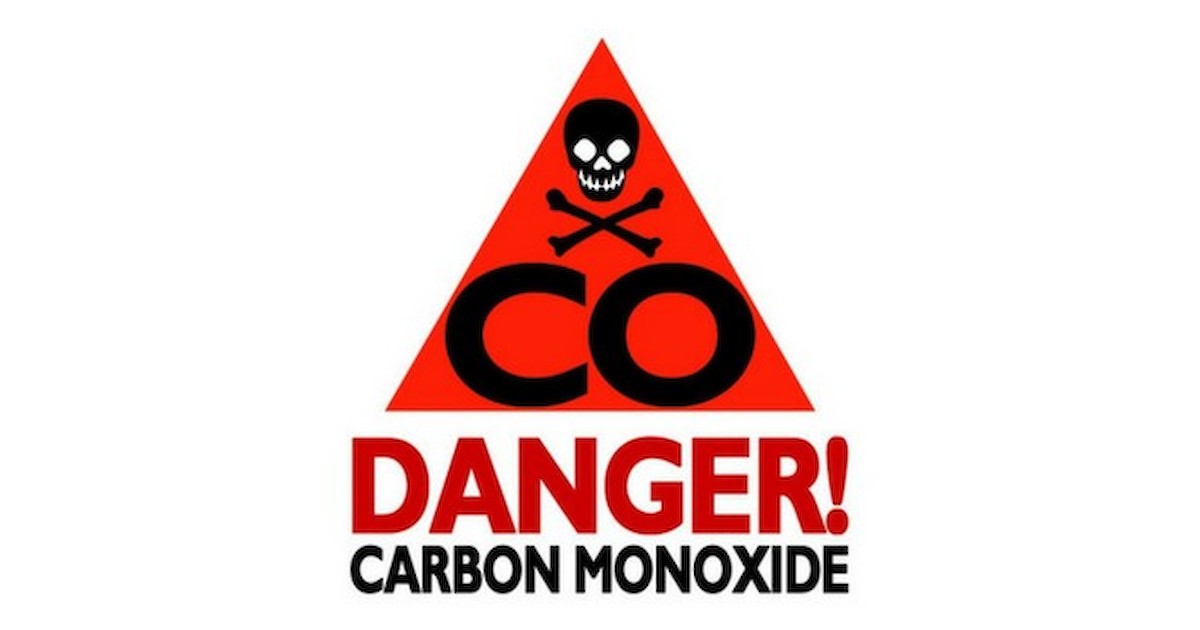
Recreational Settings
Activities involving fuel-burning equipment in enclosed or poorly ventilated areas can pose CO risks:
- Ice fishing in enclosed shelters
- Boating with covered or poorly ventilated engine compartments
- Camping with portable heaters in tents
Always ensure proper ventilation and follow manufacturer guidelines when using fuel-burning equipment in these settings.
Emerging Technologies and Future Directions in CO Safety
As technology advances, new tools are being developed to enhance CO detection and prevention:
Smart Home Integration
CO detectors are increasingly being integrated into smart home systems. These can provide real-time alerts to homeowners’ smartphones and automatically notify emergency services.
Wearable CO Detectors
Personal CO monitors, worn like a badge or watch, are becoming more common in industrial settings. These provide immediate warning to individuals working in potentially hazardous environments.
Advanced Sensor Technology
Research is ongoing to develop more sensitive and reliable CO detection methods. This includes exploring new materials for sensors and improving algorithms for early detection of dangerous levels.

How might future technologies improve CO safety? Potential advancements could include:
- Integration of CO sensors into everyday devices like smartphones
- Artificial intelligence systems that predict potential CO risks based on appliance performance data
- Improved ventilation systems that automatically activate in response to rising CO levels
While these technologies hold promise, they should complement, not replace, basic safety practices and regular maintenance of fuel-burning appliances.
Carbon monoxide remains a significant health and safety concern, but with proper awareness, prevention strategies, and emerging technologies, we can greatly reduce the risks associated with this silent killer. Stay informed, maintain your home and appliances, and always prioritize safety when using fuel-burning equipment.
Carbon Monoxide Safety | Washington State Department of Health
- Home
- Emergencies
- Be Prepared, Be Safe
- Severe Weather And Natural Disasters
- Power Outages
- Carbon Monoxide Safety
Hundreds of people die accidentally every year from carbon monoxide poisoning caused by appliances that are not used properly or that are malfunctioning. Learn how to protect yourself and your family.
If the power goes out:
ONLY use a generator outdoors and far from open windows and vents.
NEVER use a generator indoors, in garages or carports.
NEVER cook or heat inside on a charcoal or gas grill.

What is carbon monoxide?
Carbon monoxide is a poisonous gas that cannot be seen or smelled and can kill a person in minutes. Carbon monoxide is produced whenever any fuel such as gas, oil, kerosene, wood, or charcoal is burned. Carbon monoxide can build up so quickly that victims are overcome before they can get help.
Once inhaled, carbon monoxide:
- Can cause permanent brain damage.
- Can cause chest pains or heart attacks in people with heart disease.
Symptoms of carbon monoxide poisoning
- Headache
- Weakness
- Dizziness
- Confusion
- Fatigue
- Nausea
Prevent carbon monoxide poisoning
- Never burn charcoal inside homes, tents, campers, vans, trucks, garages or mobile homes.
- Do not burn charcoal in the fireplace in your home.
- Never use gasoline-powered equipment indoors.
- Never use a gas oven to heat your home, even for a short time.

- Never idle a car in a garage, even when the garage door is open.
- Never sleep in a room while using an unvented gas or kerosene heater.
- Make sure that chimneys and flues are in good condition and are not blocked.
- Carbon monoxide warning devices may provide additional protection, but should not replace the other prevention steps.
If you suspect someone has been poisoned by carbon monoxide
- Move the person to a place with fresh air immediately.
- Take the person to an emergency room and tell them that you suspect carbon monoxide poisoning.
Other languages (All files are PDF.)
- Spanish
- Chinese
- Korean
- Russian
- Vietnamese
- Large type
DOH Pub 821-045
Revised – March 2008
Reviewed annually
More Resources
Safe Generator Use
Power Outages
Carbon Monoxide Questions and Answers
Department of Health
- Contact Us
- Locations and Directions
- Jobs – Work@Health
- Public Health Connection Blog
- BienestarWA Blog (español)
- Request public records
- Rule Making
Partners
- Centers for Disease Control and Prevention (CDC)
- Local Health Departments
- Local Health Jurisdictions and Tribal Directories
- Northwest Center for Public Health Practice
- State Board of Health
- Other Partners
Notice of Nondiscrimination
- English
- Español
- Русский
- Українська
- Tiếng Việt
- 한국어
- Af‑soomaali
- Tagalog
- العربية
- 中文
- ਪੰਜਾਬੀ
- អក្សរខ្មែរ
- 日本語 | አማርኛ
- Gagana fa’a Samoa
- Kajin Ṃajōḷ
Alternate Format Requests
For people with disabilities, Web documents in other formats are available on request. To submit a request, please contact us at [email protected].
To submit a request, please contact us at [email protected].
часто задаваемых вопросов | CDC
Что такое угарный газ?
Угарный газ, или «CO», — это бесцветный газ без запаха, который может убить вас.
Детектор угарного газа
Где содержится CO?
CO обнаруживается в дымах, образующихся каждый раз, когда вы сжигаете топливо в легковых или грузовых автомобилях, небольших двигателях, печах, фонарях, грилях, каминах, газовых плитах или печах. Угарный газ может накапливаться в помещении и отравлять людей и животных, которые им вдыхают.
Каковы симптомы отравления угарным газом?
Наиболее распространенными симптомами отравления угарным газом являются головная боль, головокружение, слабость, расстройство желудка, рвота, боль в груди и спутанность сознания. Симптомы CO часто описываются как «гриппоподобные». Если вы вдыхаете много угарного газа, вы можете потерять сознание или умереть. Спящие или пьяные люди могут умереть от отравления угарным газом до того, как у них появятся симптомы.
Спящие или пьяные люди могут умереть от отравления угарным газом до того, как у них появятся симптомы.
Кто подвержен риску отравления угарным газом?
Каждый подвержен риску отравления угарным газом. Младенцы, пожилые люди, люди с хроническими заболеваниями сердца, анемией или проблемами с дыханием чаще заболевают от угарного газа. Каждый год более 400 американцев умирают от непреднамеренного отравления угарным газом, не связанного с пожарами, более 20 000 обращаются в отделение неотложной помощи, и более 4000 госпитализированы.
Ежегодно проводите техническое обслуживание вашей системы отопления
Как я могу предотвратить отравление угарным газом в моем доме?
- Установите у себя дома детектор угарного газа с батарейным питанием или резервным аккумулятором. Проверяйте или заменяйте батарейку металлоискателя, когда каждую весну и осень вы меняете время на часах. Разместите детектор там, где он разбудит вас, если сработает тревога, например, за пределами вашей спальни.
 Подумайте о покупке детектора с цифровой индикацией. Этот детектор может сообщить вам самый высокий уровень концентрации CO в вашем доме в дополнение к тревоге. Заменяйте детектор угарного газа каждые пять лет.
Подумайте о покупке детектора с цифровой индикацией. Этот детектор может сообщить вам самый высокий уровень концентрации CO в вашем доме в дополнение к тревоге. Заменяйте детектор угарного газа каждые пять лет. - Ежегодное обслуживание вашей системы отопления, водонагревателя и любых других приборов, работающих на газе, жидком топливе или угле, проводит квалифицированный специалист.
- Не используйте портативные беспламенные химические обогреватели в помещении.
- Если вы чувствуете запах из газового холодильника, вызовите специалиста для его обслуживания. Запах из вашего газового холодильника может означать утечку CO.
- При покупке газового оборудования покупайте только оборудование с печатью национального испытательного агентства, например, Underwriters’ Laboratories.
- Убедитесь, что ваши газовые приборы правильно вентилируются. Горизонтальные вентиляционные трубы для приборов, таких как водонагреватель, должны немного подниматься вверх по направлению наружу, как показано ниже.
 Это предотвращает утечку CO, если соединения или трубы не плотно прилегают.
Это предотвращает утечку CO, если соединения или трубы не плотно прилегают. - Ежегодно проверяйте или очищайте дымоход. Дымоходы могут быть забиты мусором. Это может привести к накоплению CO внутри вашего дома или кабины.
- Никогда не латайте вентиляционную трубу лентой, резинкой или чем-то еще. Такой пластырь может привести к накоплению CO в вашем доме, хижине или кемпере.
- Никогда не используйте газовую плиту или духовку для нагрева. Использование газовой плиты или духовки для отопления может привести к накоплению CO внутри вашего дома, хижины или кемпера.
- Никогда не сжигайте уголь в помещении. Горящий уголь — красный, серый, черный или белый — выделяет CO
- Никогда не используйте переносную походную газовую плиту в помещении. Использование походной газовой плиты в помещении может привести к накоплению CO внутри вашего дома, хижины или кемпера.
- Никогда не используйте генератор в доме, подвале или гараже или на расстоянии менее 20 футов от любого окна, двери или вентиляционного отверстия.

- При использовании генератора используйте дома датчик угарного газа с питанием от батареи или резервным аккумулятором.
.
Как избежать отравления угарным газом из легкового или грузового автомобиля?
- Ежегодно вызывайте механика для проверки выхлопной системы вашего автомобиля или грузовика. Небольшая утечка в выхлопной системе может привести к накоплению CO внутри автомобиля.
- Никогда не запускайте свой автомобиль или грузовик в гараже, примыкающем к дому, даже если дверь гаража открыта. Всегда открывайте дверь в отдельный гараж, чтобы впустить свежий воздух, когда вы управляете автомобилем или грузовиком внутри.
- Если вы едете на автомобиле или внедорожнике с задней дверью, при открытии двери багажника откройте вентиляционные отверстия или окна, чтобы убедиться, что через них проходит воздух. Если открыта только задняя дверь, CO из выхлопной трубы будет втягиваться в автомобиль или внедорожник.
Отравление угарным газом — NHS
Угарный газ — это ядовитый газ, вдыхание которого может привести к серьезному заболеванию.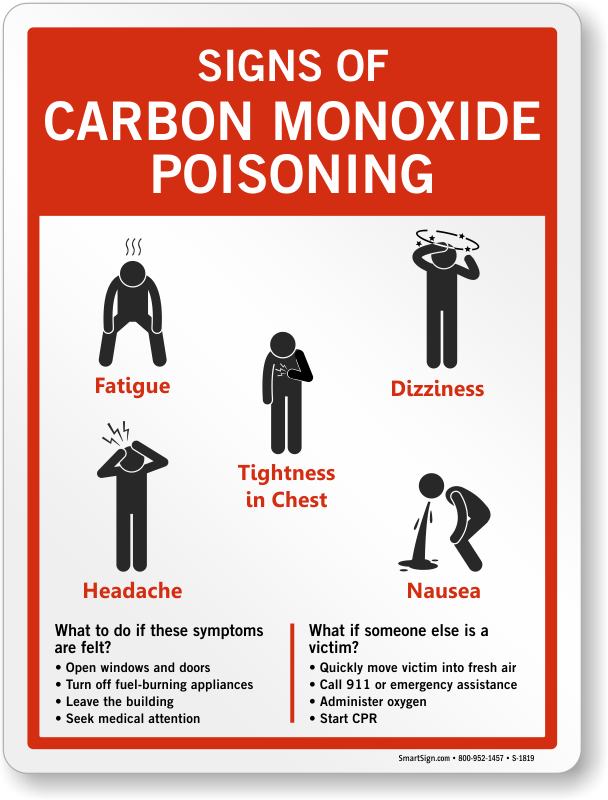 Угарный газ может образовываться в результате сжигания огня и приборов, работающих на газе, древесине, масле или угле.
Угарный газ может образовываться в результате сжигания огня и приборов, работающих на газе, древесине, масле или угле.
Проверьте, нет ли у вас отравления угарным газом
Угарный газ бесцветен и не имеет запаха, поэтому вы не можете сказать, находится ли он вокруг вас.
Symptoms of carbon monoxide poisoning include:
- headache
- dizziness
- feeling sick or being sick
- feeling weak
- confusion
- chest and muscle pain
- shortness of breath
The symptoms may come and go . Они могут ухудшаться, когда вы проводите время в пораженной комнате или здании, и улучшаться, когда вы уходите или выходите на улицу.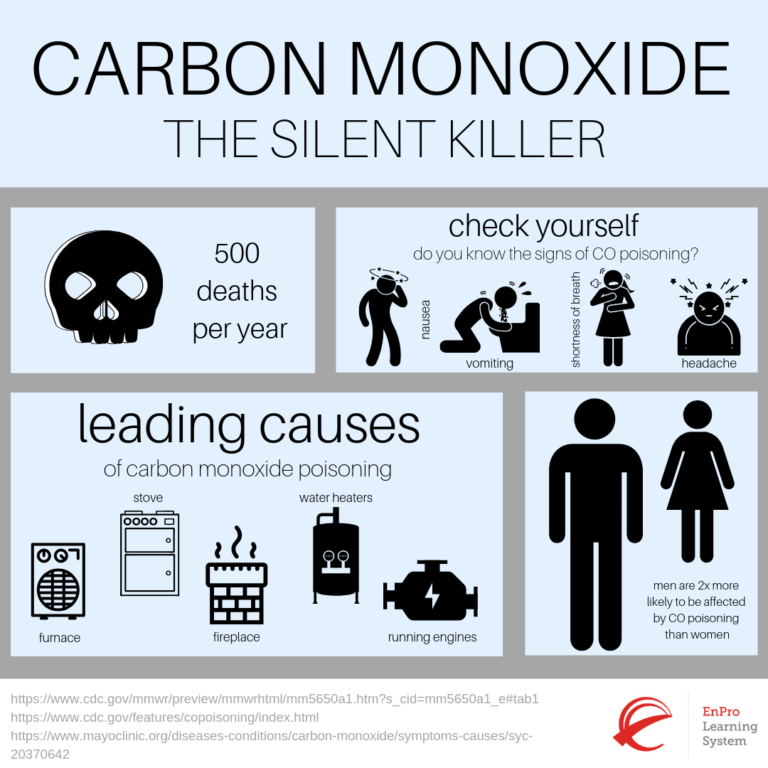
Причины отравления угарным газом
Обычные бытовые приборы, используемые для отопления и приготовления пищи, могут выделять угарный газ, если они неправильно установлены, неисправны или плохо обслуживаются.
Приборы, которые могут выделять окись углерода, включают:
- газовые котлы
- газовые плиты и глиняные печи
- газовые или керосиновые обогреватели
- дровяные, газовые и угольные печи
- портативные генераторы
Использование барбекю или походных печей в помещении, а также включение двигателей транспортных средств или газонокосилок в гараже также может вызвать накопление угарного газа.
Что делать, если вы думаете, что у вас отравление угарным газом
Если вы подозреваете, что можете отравиться угарным газом:
- прекратите пользоваться приборами, которые, по вашему мнению, могут выделять угарный газ (такими как бойлер, плита или обогреватель), если можете
- откройте все окна и двери, чтобы впустить свежий воздух
- выйдите на улицу
- как можно скорее обратитесь к врачу – не возвращайтесь в пострадавшее здание, пока не получите консультацию
Информация:
Если вы подозреваете, что из газового прибора происходит утечка угарного газа, немедленно позвоните в бесплатную горячую линию National Gas Helpline по номеру 0800 111 999.


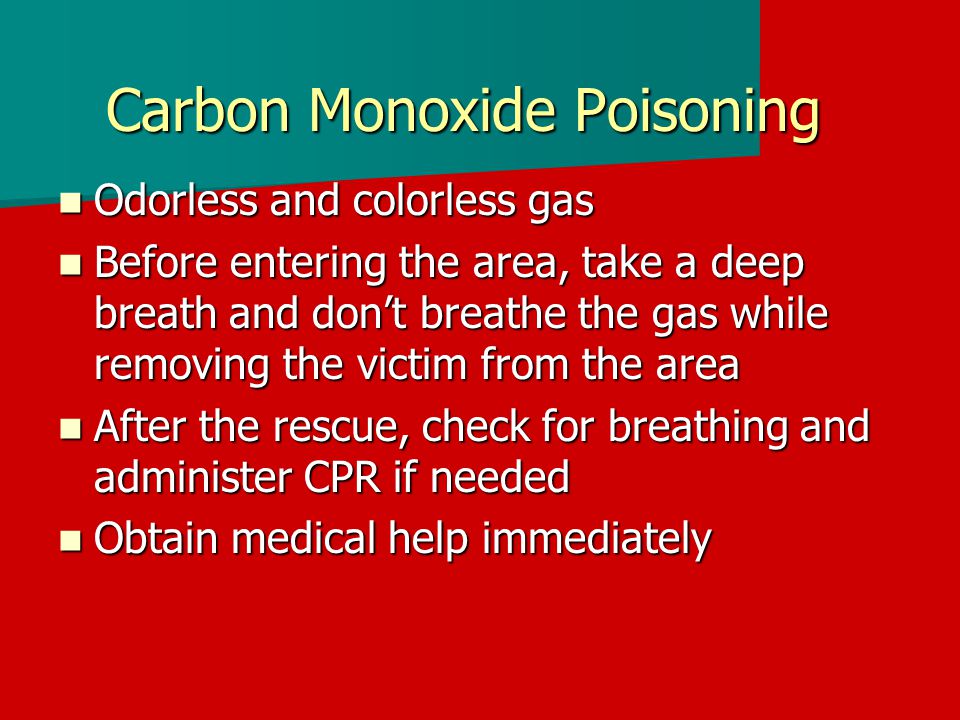
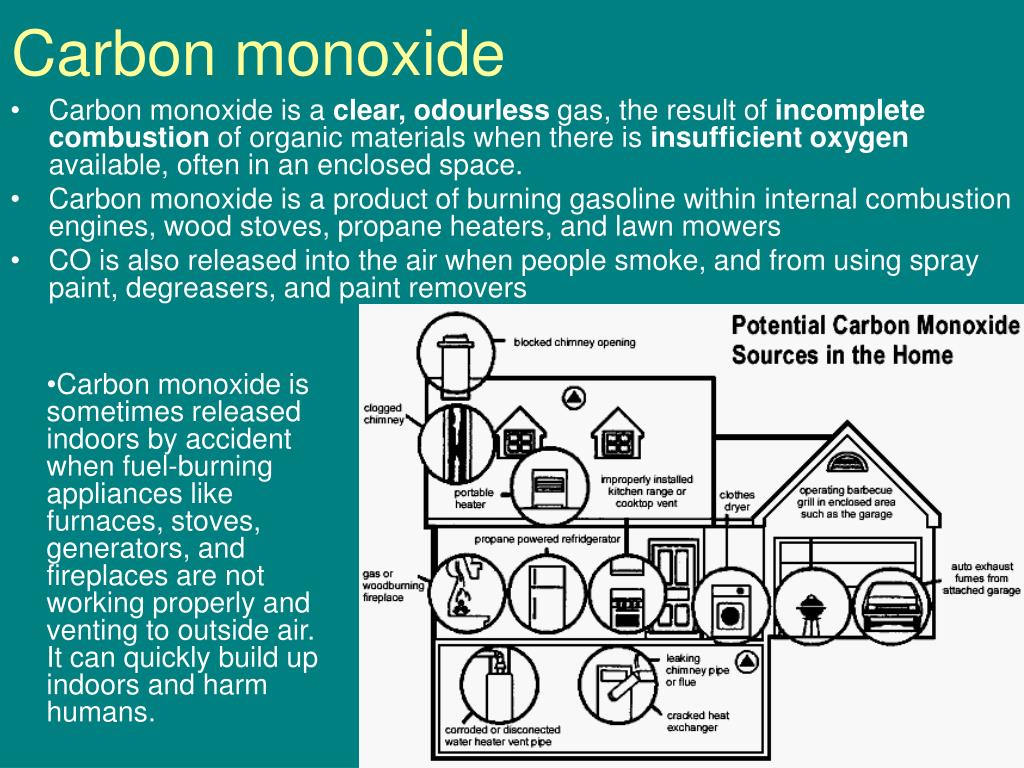 Подумайте о покупке детектора с цифровой индикацией. Этот детектор может сообщить вам самый высокий уровень концентрации CO в вашем доме в дополнение к тревоге. Заменяйте детектор угарного газа каждые пять лет.
Подумайте о покупке детектора с цифровой индикацией. Этот детектор может сообщить вам самый высокий уровень концентрации CO в вашем доме в дополнение к тревоге. Заменяйте детектор угарного газа каждые пять лет.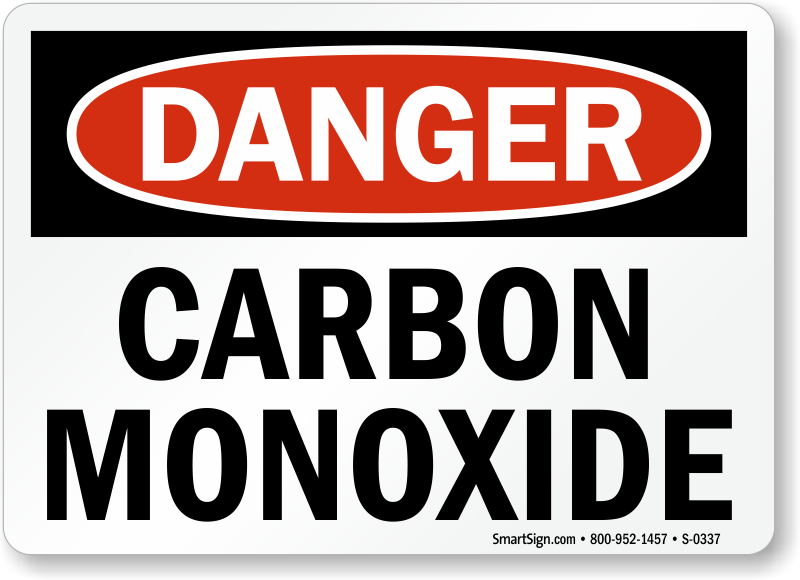 Это предотвращает утечку CO, если соединения или трубы не плотно прилегают.
Это предотвращает утечку CO, если соединения или трубы не плотно прилегают.